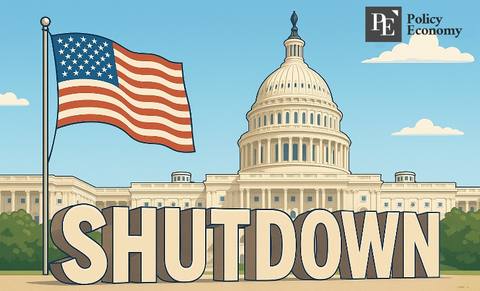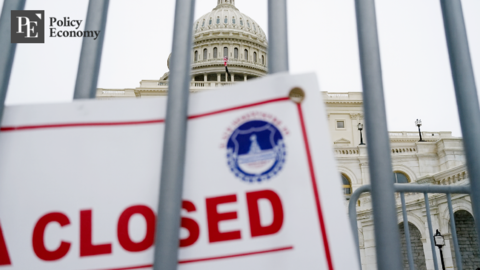Crypto Market Faces Massive Liquidation Crisis, Exposing Structural Fragility
Input
Modified
Trump’s tariff threat sparks crypto crash “COVID-scale bombshell” — XRP halves in 30 minutes Bitcoin plunges over 8% in two days

The crypto market’s fragile leverage structure has once again hit its limit. Major digital assets including Bitcoin and XRP crashed within a single day, triggering liquidations worth tens of billions of dollars and inflicting heavy losses on investors worldwide. XRP, in particular, lost half of its market capitalization in just 30 minutes, exemplifying a mechanical collapse driven by excessive leveraged trading and automated liquidation systems. The synchronized effects of price discrepancies among exchanges, forced liquidations, and investor panic compounded the selloff. Analysts warn that with the market still operating in a vacuum of self-regulation and external auditing, uncertainty surrounding liquidation events will remain unresolved.
XRP Wipes Out $80 Billion in Market Cap Before Partial Rebound
According to crypto outlet CryptoPotato on the 12th (local time), XRP’s market capitalization plunged 50% from $161 billion to $80 billion within 30 minutes the previous day. Data from decentralized exchange Hyperliquid shows that more than 1,000 accounts were liquidated, with total losses reaching $1.2 billion. On Binance, XRP’s price briefly fell to $0.80, marking a one-year low.
XRP has since recovered to around $2.50, regaining part of its losses just a day after the unprecedented selloff. However, crypto analysts note that uncertainty remains elevated and investor sentiment severely damaged. The short-term rebound, they argue, is largely the result of “mechanical deleveraging” rather than renewed buying momentum.
Bitcoin Crash Wipes Out $26 Billion, 1.66 Million Traders Hit
Bitcoin was also hit hard during the same period. According to U.S.-based exchange Coinbase, as of 6:53 p.m. on the 11th (Pacific 3:53 p.m.), Bitcoin was trading at $111,178 per coin, down 2.15% from 24 hours earlier. Compared with the $120,000 level a day before, the price has dropped more than 8% in two days. Having hit an all-time high of $126,200 on the 6th, Bitcoin plunged by over $15,000 in just five days. This triggered liquidations worth a record $19 billion, wiping out 1.66 million traders — far exceeding the 200,000 typically affected during standard liquidation phases.
Ethereum, the second-largest cryptocurrency by market capitalization, also dropped sharply, falling to an intraday low of $3,500 before rebounding to around $3,800. Earlier in the session, it had climbed near $4,400, resulting in a daily swing of nearly 20%. U.S. equities also weakened that day, with the S&P 500 down 2.7% and the Dow Jones Industrial Average down 1.9%, while gold futures rose over 1% to $4,035 per ounce.
The crypto crash began shortly after U.S. President Donald Trump posted on his Truth Social platform, hinting at rising trade tensions with China. “Something very strange is happening in China,” he wrote. “They are becoming increasingly hostile and have informed many nations that they plan to impose export controls on all elements related to rare earth production.”
He continued, “One of the policies we’re reviewing right now is a large-scale tariff increase on Chinese imports. Many other countermeasures are also being seriously considered.” Trump added that his planned meeting with Chinese President Xi Jinping at the upcoming APEC summit in Korea “no longer seems necessary.” The president has already announced plans to impose an additional 100% tariff on Chinese goods starting next month in response to China’s rare earth export restrictions.

“Mispricing and Compliance Systems Must Be Scrutinized”
Experts say the market rout rivals the COVID-era crash of 2020. The scale of the drop has fueled speculation within the community that the market may have been manipulated by large players engaging in a so-called “mother of shakeouts.” Notably, major institutional wallets were detected taking massive leveraged short positions just before Trump’s post at 10:57 a.m. on the 11th, with some reportedly reaping profits exceeding $100 million within hours.
Market observers widely view the episode as exposing fundamental weaknesses in the crypto ecosystem. Unlike traditional stock markets, cryptocurrencies lack disclosure requirements or short-selling reporting obligations, making it difficult to monitor insider or unfair trades. Excessive leverage and anonymity amplify rapid crashes and mass liquidations, inflicting disproportionate losses on retail investors. While some exchanges have pledged to strengthen internal monitoring, there has been little movement toward legal enforcement or criminal investigation.
In the wake of the turmoil, calls are mounting for regulatory scrutiny across the crypto exchange sector. Crypto.com CEO Kris Marszalek wrote on X on the 11th, “This liquidation wave surpasses even the FTX-era crash. Regulators must examine the fairness of exchange operations.” He added that “some exchanges may have mispriced assets or restricted withdrawals, disadvantaging traders,” and questioned whether exchanges are adequately equipped with transaction monitoring and anti–money laundering (AML) programs.






















Comment